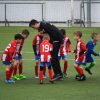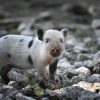The advance of generative machine learning models makes computers capable of creative work. In the scope of drawing pictures, there are a few notable models that allow you to convert a textual description into an array of pixels. The most powerful models today are part of the family of diffusion models. In this post, you […]









